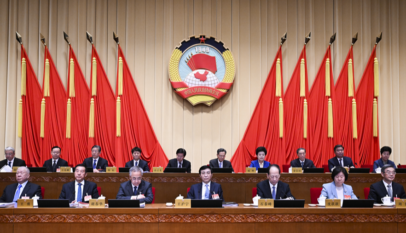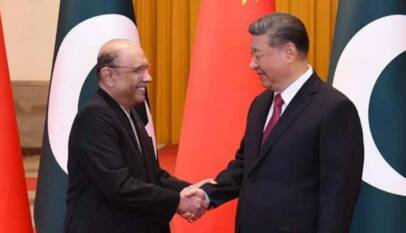Digital silk road under CPEC set to overhaul Pakistan’s digital infrastructure
Under the umbrella of the digital silk road, Pakistan is expected to overhaul its digital infrastructure. For instance, Chinese Company Huawei Marine had a joint venture with a Pakistani company in 2017 to construct Pak East Africa Cable Express for connecting Pakistan to Kenya and Djibouti. The concept of Digital Silk Road was introduced in 2015 by the National Development and Reform Commission, Ministry of Foreign Affairs and Ministry of Commerce of the People’s Republic of China, digital silk road has been a critical part of the ambitious Belt and Road Initiative. It is aimed at strengthening internet infrastructure, deepening space cooperation, developing common technology standards and improving the efficiency of policing systems among the Belt and Road countries in Asia, Middle East, Europe, Africa and Latin America.
Enhanced connectivity is the primary motive of massive Belt and Road Initiative (BRI) by China. Since 2013, a bulk of Chinese investments have crowded around physical infrastructure projects under BRI in over 130 countries and involving some 35 international organisations. BRI is a vehicle by which China is restoring the ancient Silk Road through the integration of maritime, port and land transport routes. China Pakistan Economic Corridor (CPEC) is flagship project of BRI. The Digital Silk Road (DSR), on other hand, was introduced in 2015 by National Development and Reform Commission, Ministry of Foreign Affairs and Ministry of Commerce of the People’s Republic of China, as a sub-goal of BRI. The DSR was, in fact, aimed to strengthen internet infrastructure, deepen space cooperation, develop common technology standards and improve efficiency of policing system among the Belt and Road countries in Asia, Middle East, Europe, Africa and Latin America.
Ever since its launch, the Digital Silk Road has new avenues of technological transformation for emerging economies. Chinese tech investments have the potential to jumpstart digital developments in BRI countries. In June 2020; China has launched BeiDou-2 i.e. Chinese constructed and operated global satellite navigation system consisting of 35 satellites. BeiDou Navigation Satellite System (BDS) is required to be commercially used worldwide as an alternative to the Global Positioning System (GPS) of USA. Along with basic positioning, navigation and time services, BDS can provide high precision and high integrity services to the users in civil aviation, maritime, railway and other industries. Already 30 countries including Pakistan, Thailand, Brunei and Laos have adopted BDS.
Then, Chinese Company Huawei Marine had a joint venture with a Pakistani company in 2017 to construct Pak East Africa Cable Express for connecting Pakistan to Kenya and Djibouti. Other projects of Huawei Marine include submarine cable in Indonesia, and Philippines. On the softer side of the Digital Silk Road, China’s Alibaba invested $400 million in Singapore Post, and $620 million in India’s e-commerce players like Snapdeal, Bi Basket and Ticket New etc. to promote e-commerce services.
Under DSR, Smart Port Technology has been developed and applied that connects ports to the global supply chain to optimize transport mode choices. For this digital integration, China created a body like Smart Maritime Council to standardize and harmonize digital space within the maritime sector. Further, China has also established its own technical standards and principles of cyber-sovereignty. Blockchain Services Network (BSN) has also been launched by China to provide a low-cost platform for developing blockchain-based applications along the Digital Silk Road. China’s central bank has digital currency plans besides the replacement of US-dominated communication network SWIFT that facilitates inter-bank funds transfer. After laying out fibre optic network, the DSR now extends network equipment, technology and facilitating software in the form of 5G networks. Huawei 5G cellular network is more advanced and affordable. Its huge success is now prompting China to look for 6G.
However, increasing acceptability of Digital Silk Road among BRI countries has brought forth some criticism also. USA dubs DSR as a risk to international security and attempts to persuade allies to prohibit Chinese corporations from contributing to their critical digital infrastructures. Despite this Australia, New Zealand, Japan, UK and Germany are less willing to completely block Chinese involvement in 5G networks and other digital infrastructures. In another misperception, the DSR is being viewed as “techno-authoritarian” model for countries along the BRI. But, the deployment of facial recognition technology and privacy-invasive infrastructure in emerging market is very much a demand-driven phenomenon. A practice of certain Chinese companies to self-brand as part of the DSR in overseas projects has been identified by the Chinese authorities for proper control. Again, the DSR has also intensified a strategic competition between China and USA that is reflected in global anti-Huawei 5G campaigns and new Indo-Pacific focused Digital Connectivity and Cybersecurity Partnership (DCCP) by USA.
If certain Western observers emphasize espionage and surveillance risks of China’s Digital Silk Road, the Chinese government stresses the un-met needs of digital connectivity in Global South, from online education in Zambia to smart health in Saudi Arabia. Backed by Chinese government loans in billions of euros, Huawei and its rival ZTE, for instance, built much of Africa’s digital infrastructure including implementation of e-governance, smart education and digital health projects. In 2015 and 2017, after the DSR was announced, Chinese ICT infrastructure financing across the continent surpassed the combined funds from African governments, multilateral agencies, and G7 nations. The landlocked Central Asia too increased its digital connectivity with Chinese-built fibre optic cables.
While financing digital connectivity in the underserved regions, Chinese government is also contributing to the United Nations’ ambitious Sustainable Development Goals (SDGs). Even the UK’s Department for International Development has initiated a study on how the DSR’s potential could spur rural growth, support SMEs, reduce inequality and strengthen democratic participation to the SDGs. Further, the UN Centre for Trade Facilitation and Electronic Business is exploring how standards for cross border e-commerce can support DSR.
In nutshell, China’s Digital Silk Road is essentially a game changer that brings abundant economic opportunities for the less developed economies. With steady uptake of the 5G network and access to optic cables, supported by BeiDou navigation systems, the Digital Silk Road is getting increased global acceptance in Asia, Eurasia, Africa, Latin America and with institutions like United Nations. Pakistan should enhance its digital capacity through DSR by looking beyond fibre optics and related infrastructure. We must be attracting Chinese investment in important areas of DSR like big data, nanotechnology, quantum computing, 5G and artificial intelligence.
Expert discusses China’s SOE Governance, competition, and innovation lessons for Pakistan
A few days ago, H.E. Jiang Zaidong, ambassador of the People’s Republic of China, held a c…













